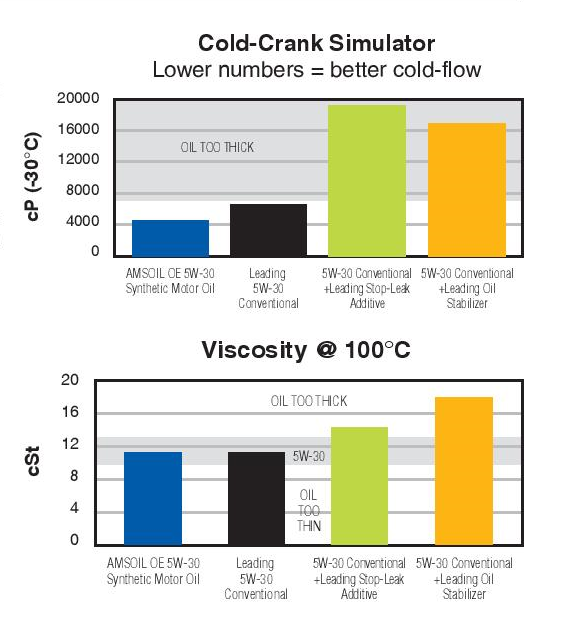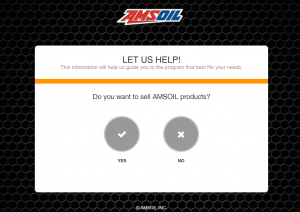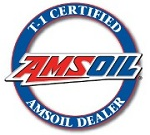This months tech article comes from our monthly AMSOIL Dealer magazine. Many people peruse the oil and additive isles at their local parts store or big box store. There are a lot of claims written on those bottles of stuff. AMSOIL Inc recently did some testing to determine if some of the claims on those bottles were accurite. We’ve always been a proponent of using a qualifty engine oil like AMSOIL to protect and increase performance. We let the professional chemists and engineers formulate the proper engine products not someone in their back yard garage mixing up a bunch of additives to see what works (or not)
Q: Should oil additives or aftermarket products be added to AMSOIL motor oils?
A: No, you don’t need them. AMSOIL motor oils are formulated under the strictest quality control standards to provide superior lubrication performance. Additives cost money and only detract from the quality of AMSOIL motor oils.
Beware of top-treat engine oil additives
AMSOIL testing reveals big trade-offs that affect protection.
Alex Thompson, AMSOIL Inc. – MARKET MANAGER, AUTOMOTIVE B2C
Top-treat engine oil additives are available at auto parts stores and other retailers everywhere. Motorists sometimes use them to help reduce oil consumption and provide a little extra wear protection. While these are noble goals, some toptreat additives come with big trade-offs that affect protection, as our testing shows.
We bought two of the most popular engine oil additives available, a stop-leak product and an oil stabilizer, and used them to treat a name-brand conventional 5W-30 motor oil. We used conventional oil since it’s unlikely a motorist who uses AMSOIL synthetic motor oil or another top-shelf synthetic oil is going to treat it with an aftermarket additive.
We subjected the conventional motor oil to industry-standard bench tests to gauge wear protection, cold-flow ability and viscosity stability. We then treated samples of the same oil with two popular additives according to the treat rates on their labels. Then we tested the oil again.
Our findings show that conventional oil treated with the two additives we tested impaired the oil’s cold-flow ability and increased its viscosity so much that it no longer met the viscosity requirements of a 5W or a 30-weight oil.
In the Cold-Crank Simulator graph, notice the black bar, which shows the untreated oil’s performance in the test. This test is used to determine an oil’s ability to flow well during cold starts, which helps prevent dry starts and protect against wear.
The faster the oil flows after it has been sitting for a while, the better startup protection it provides. The untreated oil falls within the acceptable range for a 5W oil (6,600 cP max. @ -30°C). The performance of AMSOIL OE 5W-30 Synthetic Motor Oil is included for comparison (the dark blue bar on the left).
Now, look at the conventional oil’s performance in the CCS Test after it was treated with the engine oil additives. Both the stopleak additive and the oil stabilizer increased the oil’s viscosity so much that both samples no longer met the requirements of a 5W oil, failing the
test. This means the oil won’t flow as readily at startup, impairing wear protection at the time when most wear occurs.
The engine oil additives also raised red flags in the area of viscosity at operating temperature. In the Viscosity graph, the black bar shows the viscosity of the untreated conventional oil at 100°C (212°F). It falls within range for a 5W-30 oil, shown by the shaded area.
Now, look at the viscosity at 100°C of the oil treated with the two additives. That’s right…they’re both out of viscosity range. In effect, you’re now using a 40- or 50-weight oil instead of the 30-weight the engine manufacturer recommends.
That’s a problem because oil that’s too thick for the engine can fail to flow fast enough to fill the area between the crank
journals and main bearings, leading to bearing wear. Thick oil also impairs circulation, reducing the oil’s ability to
transfer heat from critical engine components while decreasing fuel economy.
Motorists who desire improved protection at a lower initial price are better off using a quality synthetic oil like AMSOIL OE Synthetic Motor Oil. At Preferred Customer pricing, five quarts is about the same price as a jug of leading conventional oil from a big-box retailer plus the cost of a stop-leak additive or oil stabilizer. Plus, they get the benefits of maximum fuel economy, improved extreme-temperature protection and better engine cleanliness. It’s the better option however you look at it.
Our best advice to anyone who wants the best protection and performance out of their gasoline or diesel engine is to use the recommended product as outlined in the AMSOIL Online Lookup guides for your car, truck, motorcycle, ATV/UTV etc. If you need assistance or cannot locate the products you need, don’t hesitate to reach out to us. We are full time AMSOIL dealers since 1999. We have extensive experience with all types of vehicles and equipment.
Are you a business owner looking for the best pricing for AMSOIL products? Or maybe you are interested in the Preferred Customer Program or even better the AMSOIL Business Opportunity. Check out the AMSOIL Account Wizard to help you determine which account you qualify for and which best suits your needs. Click the image below.





